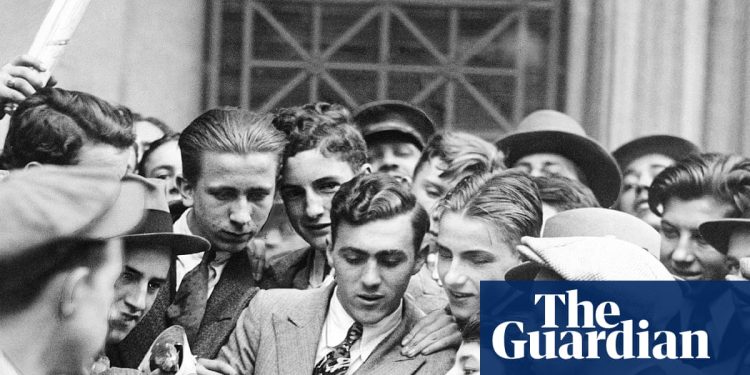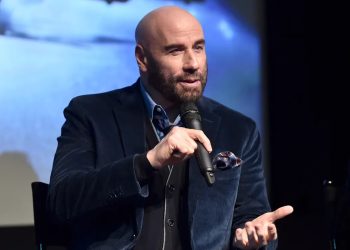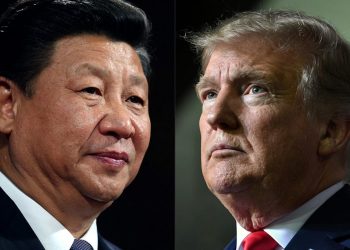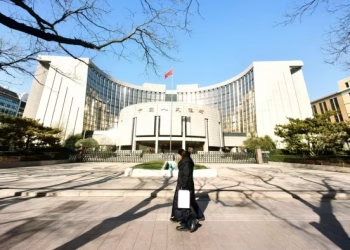AAndrew Ross Sorkin’s first book, Too Big to Fail, was a bestseller about the 2008 financial crisis, published the following year. His second, 1929, out this week, takes readers “Inside the Greatest Crash in Wall Street History – and How It Broke a Nation.”
Sixteen years have passed between two books, but Sorkin has not been idle. Columnist for the New York Times, he founded its newsletter and its DealBook summit; he is co-anchor of Squawk Box for CNBC; and after HBO’s Too Big to Fail, he co-created Billions, a huge hit for Showtime with Damian Lewis and Paul Giamatti.
After Too Big to Fail, Sorkin said he “was often asked about 1929. Actually, I didn’t know much about it. I had read JK Galbraith (The Great Crash, 1929, published 1955) and a few other books. And most of the people I knew, we all sort of talked about 1929 as this terrible calamity, but no one… knew what had happened. actually happened – who the people were, what they were telling each other, what their motivations were, what the incentives were, what the lessons actually were.
The short version of what happened in 1929 is that a stock market built on rapid credit and wild speculation suffered a series of falls that culminated in the Black Thursday crash of October 24, a day “measured by disorder, fear and confusion,” in Galbraith’s words.
Combined with factors such as protectionist tariffs and rising unemployment, the crash was a key sign of a devastating global depression.
“About ten years ago,” looking to work his way through the story, Sorkin went on vacation and “like a real nerd, he downloaded a few books onto a Kindle…and I remember reading them, thinking, ‘Wow, this is so much more interesting than I thought,’ but also thinking that most of the books about that period had been written in the ’30s, some in the ’40s, ’50s. I think there’s one which was maybe in the 70s. And a lot of them were written by economists…told through graphs and data and economic systems. And I wanted human drama.
“One of the lessons of writing Too Big to Fail is that we often talk about business and economics in terms of numbers and structures and systems, but in the end it’s ultimately about people and the decisions they make. So I thought, ‘Maybe there’s an opportunity to write a book like that.’
A visit to Harvard provided access to the papers of Thomas Lamont, a partner at JP Morgan, including transcripts of White House interviews with President Herbert Hoover. Considering myriad commitments and the challenges of research during a pandemic, Sorkin’s book was a good idea.
As influences for a book based on first-hand sources found in countless archives, Sorkin cites business classics: James B Stewart’s Den of Thieves, about insider trading; Liar’s Poker by Michael Lewis, about bond traders; and Barbarians at the Doorstep by Bryan Burrough and John Helyar, about the fall of RJR Nabisco.
“Widening the aperture,” a phrase Sorkin uses to describe a project that encompasses the earlier panics (1907, 1921) and the long aftermath of 1929, he also turned to Walter Lord’s A Night to Remember, from 1955, as “really the definitive account in the play of the sinking of the Titanic” and “actually a bit of a mental model…(for) a way that I wanted the reader to be able to feel.”
The crash of 1929 indeed resembled a shipwreck. Livelihoods were lost when the market capsized, although Sorkin confirms that an image in the popular imagination, of ruined brokers jumping out of Wall Street windows, is not what actually happened. For a while, it looked like the economy might recover. It took other factors, notably the Smoot-Hawley Tariff Act of 1930, to cause the depression.
As Sorkin’s book comes out, Donald Trump’s tariffs and their effects are making news. Sorkin said he wrote with an eye on current events, but preferred not to exaggerate such parallels, seeking instead to present relatable characters.
“I always try to understand where the impulse comes from, where the motivation comes from, whatever decision people make,” Sorkin said, citing experience gained “in the context of Billions and making the movie Too Big to Fail” as well as “what I try to do with my journalism every day.
“A lot of times it was trying to figure out, ‘Well, what makes Charlie Mitchell tick?’ …or: “What was it about Carter Glass as a child that led him to become this very unique kind of character?” » Likewise with Lamont and John Raskob and so many others.
Mitchell, CEO of National City Bank and victim of the accident, was brought before Congress and in court on tax charges. Glass was a Virginia senator who led reforms to protect ordinary Americans from the excesses of Wall Street. Raskob, an executive at DuPont and General Motors, chaired the Democratic National Committee.
One way Sorkin seeks to make these characters relatable is by depicting their use of technology to master rapidly changing markets—analog phones arranged in tight rows on desks above Wall Street now house computers. He’s also happy to compare key players to their today’s equivalents.
As for Glass, a conservative from Virginia, Sorkin turns to a current, decidedly more progressive senator from Massachusetts, the force behind the Consumer Financial Protection Bureau, created after 2008 to protect ordinary investors.
“If Elizabeth Warren was a racist, that’s who (Glass) would be,” Sorkin laughed. “But what, to me, was so interesting about (Glass) was also that… he was cited after the 2008 financial crisis as one of the great bastions of the regulatory world. I think liberals really liked him. They thought he was really trying to hold Wall Street accountable.
“And I went into this project with that narrative in mind, and… as the story progresses, it’s a lot more complicated than that. I’m not sure Elizabeth Warren would quote Carter Glass today if she really understood the whole dynamic of how the Glass-Steagall bill came to be.”
“I thought of Glass-Steagall (also named for Henry B Steagall, an Alabama congressman) as this famous bill that broke up the banks and was really intended to end casinos (market gambling), and then you realize… the real players weren’t even politicians, to some extent, they were bankers who were trying to harm each other. And maybe that just represents how this world is actually no different than it is today, in many ways, in terms of how sausage is prepared.
Among these bankers, Sorkin found Mitchell “kind of a bad guy, but not really” and compelling because “I like characters that aren’t black and white. And he was so interesting to me because he was as famous as Jamie Dimon (CEO of JPMorgan Chase) would be today. But there were aspects of (Mitchell) that might have been more like a Michael Milken,” the insider trader imprisoned in 1990 then pardoned by Trump in 2020.
“Charlie Mitchell created credit and leverage in the system to lend money to ordinary investors, which is largely what led to the crash. Michael Milken revolutionized the debt markets and the credit markets in the ’80s by lending high-yield bonds, or what people call junk bonds, to less-than-good credits. And they were both arrested. The outcome was slightly different, but they were both hated.”
No stranger to today’s titans – it was his question that prompted Elon Musk to tell critics “fuck you” – Sorkin is well placed to make comparisons. Regarding another key figure from 1929, the owner of Tesla, SpaceX and X duly enters the chat.
“To me, John Raskob is like Elon Musk. Think of a businessman who’s been involved in everything. Cars, obviously, General Motors, and (Raskob) gets involved in politics… starting to try to damage Hoover’s reputation by doing all these projects behind the scenes. And then he builds the equivalent of a spaceship, the Empire State Building. And it turns out he has also 13 children. “
Among the supporting players is Hoover, the technocratic president who called the post-crash “panic” a “depression,” inadvertently sealing his reputation as a failure, left to watch Franklin D. Roosevelt save the day. Sorkin also portrays Winston Churchill, a decade removed from his heyday as British Prime Minister, in debt to his blouse, still gambling in the Manhattan markets, wandering Fifth Avenue, only to get hit by a car.
Financial calamity has political consequences. In the second half of 1929, Sorkin’s story moves to Washington and attempts to hold Wall Street accountable. As in 2008, most major players avoided heavy penalties.
Clearly, Sorkin is going to be asked more questions about what 1929 might teach us about 2025 and about a U.S. economy showing signs of trauma, Trump-induced or not.
He said: “There are a lot of parallels that I imagine people could draw. I mean, look at today’s idea and yesterday’s idea of democratizing finance.”
In 1929, “democratizing finance” meant opening markets to ordinary Americans through unchecked credit.
“Today,” Sorkin said, “what are they talking about democratizing finance? They just passed a bill signed by Trump that will allow private equity, venture capital and private credit in your 401(k) plan. It’s all about democratizing finance. Crypto is now about democratizing finance. Obviously, the tariffs are almost a super direct parallel.”
Another Trump obsession, bending the central bank to his will, is also foreshadowed in Sorkin’s book.
“There’s the whole debate that the Fed had in the spring of 1929 about whether to raise or lower interest rates,” Sorkin said. “To some extent, (there are) even debates about the independence of the Fed… So I think there are a lot of things that seem familiar.”









